Conservation efforts in Lahore offer a fascinating insight into south Asia’s past and present, writes Ben Flatman
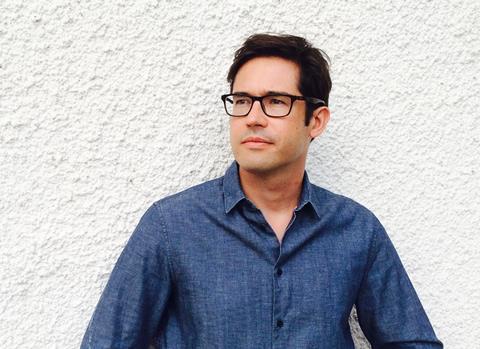
In February this year, just before the first lockdown, I was lucky enough to visit Lahore for the first time, as part of a work trip. Although I was aware of the city’s rich history, I was not prepared for the diversity and wealth of its architectural heritage.
With its myriad of Muslim, Hindu, Sikh and British colonial architecture, it felt easily the equal to Delhi and Agra, its fellow former Mughal capitals, although much less visited by foreign tourists. And as in those other cities, I could also see the visible signs of the battle for architectural conservation.
In a familiar narrative from countless historic cities across southern Asia, by the late 20th century a combination of neglect and unsympathetic development was putting Lahore’s heritage under increasing threat. Recent conservation initiatives have been led by local architects concerned about the progressive loss of the walled city’s unique character, and a general decline in the conditions of its historic buildings and monuments. Conservation expertise and funding has come from the Aga Khan Foundation and Norwegian government, among others.
As so often, getting more localised and sympathetic control over planning and conservation has been critical to bringing about a change in attitudes. In 2012, to help conserve the walled city and the Shahi Qila (royal fort), responsibility was wrested from the existing local authority and development corporation, and placed in the hands of the newly created Walled City of Lahore Authority. The WCLA has prioritised documenting the city’s historic structures and using architectural conservation as a means to promote tourism and sustainable economic development – something that is still a relatively new concept in Pakistan.
My flying visit to the walled city in February was focused primarily on the Shahi Qila, which sits on the former banks of the Ravi river, at the northern edge of Lahore’s historic core. The fort has long been recognised as a significant example of syncretic Mughal design, which blended Persian Muslim and Hindu architectural and craft traditions to create a style unique to south Asia.
However, the site’s widely recognised importance had not been matched by any sustained efforts at conservation and until recently the principal buildings had been badly neglected.
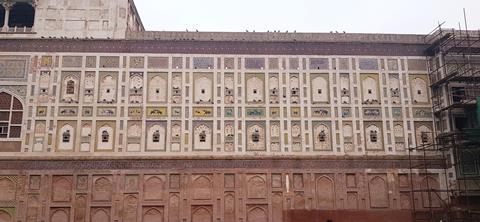
One of the fort’s most striking elevations, and arguably one of the most astonishing sights in Muslim architecture, is the famous picture wall. Commissioned by the emperor Jahangir in the 1620s, it is a massive 440m celebration of seemingly highly un-Islamic figurative art.
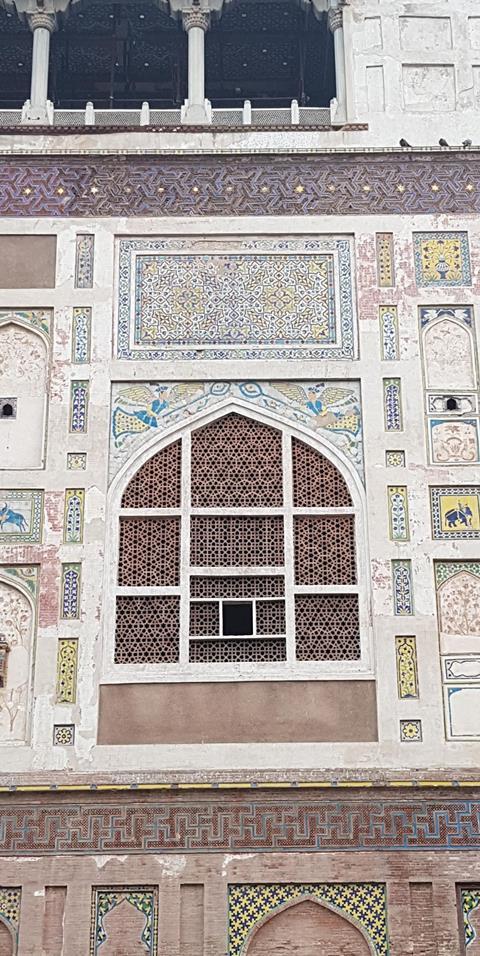
Using mosaics and frescoes it depicts a dizzying mix of hunting scenes, angels and dragons. Although Muslim artistic traditions in Persia and south Asia were rich with figurative art, this was almost always found within the context of illuminated manuscripts or interior architecture.
The picture wall, which is undergoing a major restoration, is perhaps unique in giving figurative art such public visibility and prominence within an ostensibly Muslim architectural context.
Under Jahangir’s father, the emperor Akbar, the Mughal empire grew massively in terms of its extent and wealth. Akbar was a powerful patron of the arts and was also famously tolerant of his diverse subjects’ varied religions and beliefs. Jahangir’s legacy is more contested and his attitude to religion and tolerance of non-Muslims less clear. What is clear, however, was his love of art and literature.
When I recently spoke to Dr Ebba Koch, an expert on Mughal architecture at the Institute of Art History in Vienna, she described Jahangir’s extraordinary commission in Lahore as his way of “advertising the imperial presence in a new and innovative way”. Underlining the picture wall’s significance, Dr Koch was keen to highlight its uniqueness, pointing out that it was “something very daring and unusual for a Muslim king”.
As she also explained, “the artist who creates figurative art in Islam abrogates the powers of god - to have it on the outside of the building just shows the freedom of thinking in the period”.
Less doctrinally controversial, but no less arresting, are the series of spaces that sit behind and above the picture wall, within the Shah Burj (king’s pavilion). This seemingly perfect composition of quadrangle and surrounding pavilions was built under Jahangir and his son Shah Jahan and is perhaps the best-preserved part of the entire fort complex.
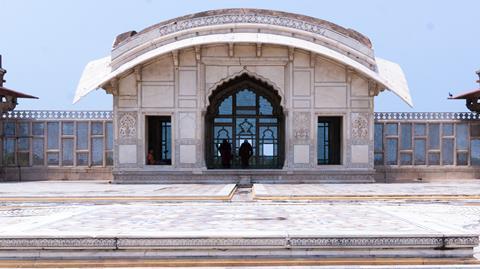
On the northern side sits the Sheesh Mahal (palace of mirrors) which under a later period of Sikh rule, was once the home for the Koh-i-Noor diamond. And to the west is the remarkable Naulakha pavilion, with its distinctive Bengal roof, pietra dura decoration and ornate filigree window. Taken as a whole, there is little in south Asia to match it.
And, as elsewhere in the region, discussions around architectural conservation can sometimes shed as much light on contemporary attitudes to history and regional heritage as they do on the past. The recent construction of a raised metro system has caused controversy, passing close to the Chauburji, a Shah Jahan-era monumental gateway.
The metro has also led to the outright destruction of a Jain temple. This was predictably reported in the Indian press as an example of the dominant Pakistani Muslim community acting in bad faith towards the remnants of the country’s former Hindu and Jain communities.
Elsewhere, major Sikh gurdwaras have been conspicuously well restored. However, the preservation of any remaining Hindu and Jain temples, many of which had in any case already been destroyed, appears to be less of an immediate priority.
One recent report suggested there were only two functioning Hindu temples in Lahore. For a city whose population was once 40% Hindu and Sikh, it is a striking reminder of the devastating change wrought by Britain’s partition of India in 1947.
The 1992 destruction of the Babri mosque in Uttar Pradesh also seems to weigh heavily over this narrative of highly selective conservation. Attempts to restore or create new temples in Pakistan are regularly frustrated, with India’s demolition of the toleration of the Babri mosque usually given as justification.
At a time of heightened global distrust and intolerance, it is fascinating to see Lahore’s astonishing architectural legacy through the prism of past and present religious and political upheavals.
The Mughals reached the pinnacle of their success, under Akbar, through a conspicuous display of tolerance. The resulting economic and cultural collaboration between Muslims and Hindus led to an immense outpouring of architecture and art that helped to define south Asia’s cultural status on the global stage for centuries.
Today southern Asia is one of the least economically integrated regions in the world. Pakistan and India seem destined to an interminable military stand-off.
India appears to be increasingly turning away from its secular and tolerant traditions and moving further towards a Hindu nationalist identity that seeks to deny Indian Muslims their most basic rights. Meanwhile in Pakistan religious intolerance seems so ingrained that Imran Khan struggles to get even one Hindu temple constructed in Islamabad.
Arguably, in the end the Mughal emperors were weakened by their own growing intolerance and the discord they began to sow among their diverse subjects. And their eventual demise was due to the disunity they created, which prevented a united front against existential external threats.
That intolerance and discord rarely leads to lasting peace or prosperity is a history lesson that past and present aspiring emperors in south Asia and elsewhere have always been well advised to remember.



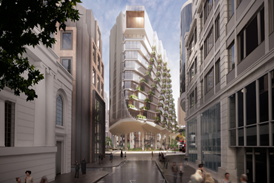
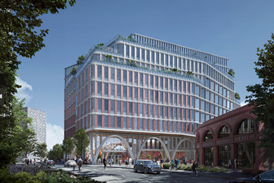
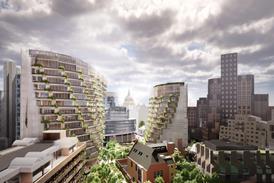









No comments yet